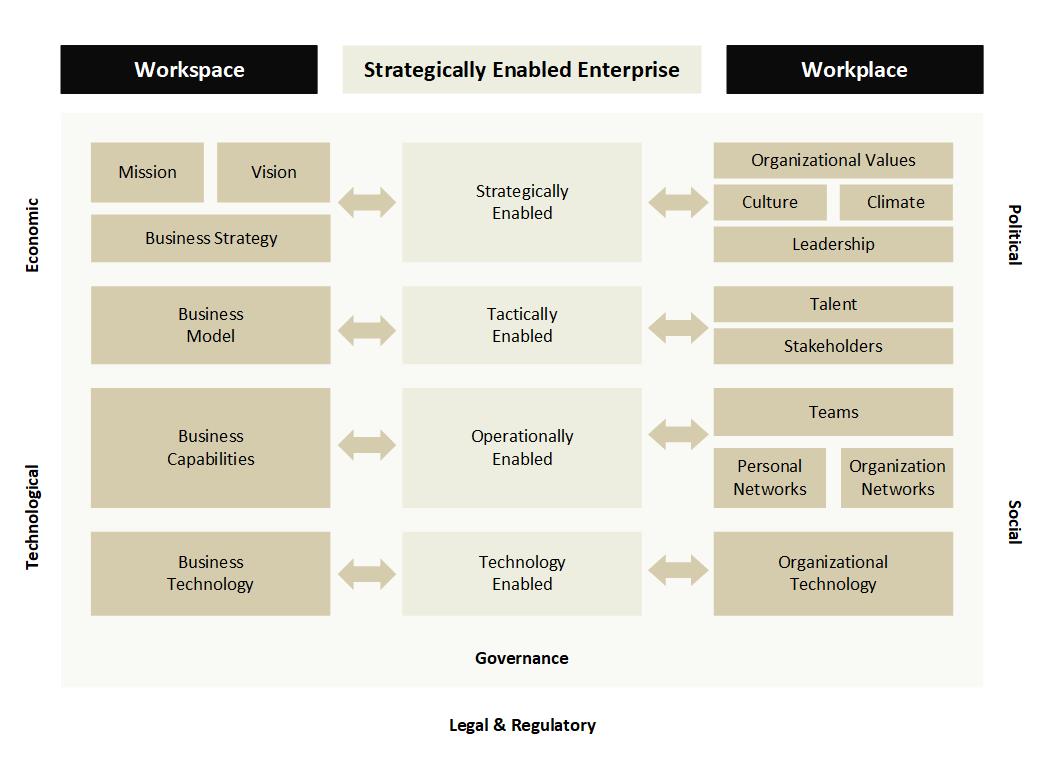“You can’t grow if you’re drivÂen only by process, or only by the creative spirit. You’ve got to achieve a fragile balÂance between the two sides of the corporate brain.†– Howard Schultz
Based on the philosophy of Enterprise Relativity, the Strategically Enabled Enterprise (SEE) framework breaks down the enterprise into several primary diÂmensions that allow leaders to more easily identify the key relationships and underlying relevancies. Comprised of two lenses or vantage points it provides a balanced view of an enterprise’s workÂspace and workplace. The SEE framework defined as a dichotomy model connects the enterprise’s workÂspace and workplace via an epicenter of transformational change with the ultimate goal of susÂtainable synergy while it maintains structural stability.

While the SEE framework is relatively straight forward, the underlying relevancies and relationships of the frameÂwork is paramount to better understanding the structure of the enterprise. This implies that leaders need to have multiple views of the enterprise.